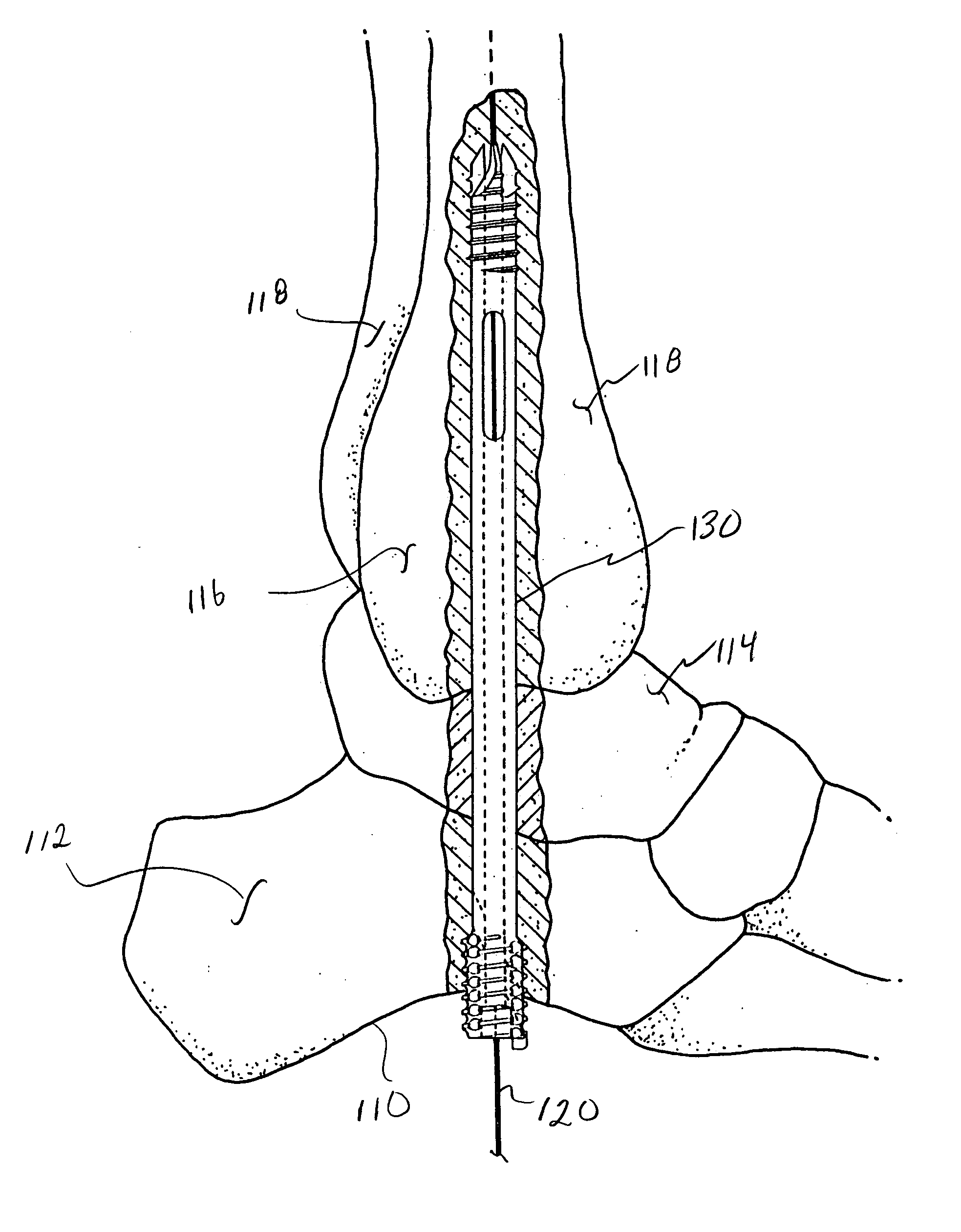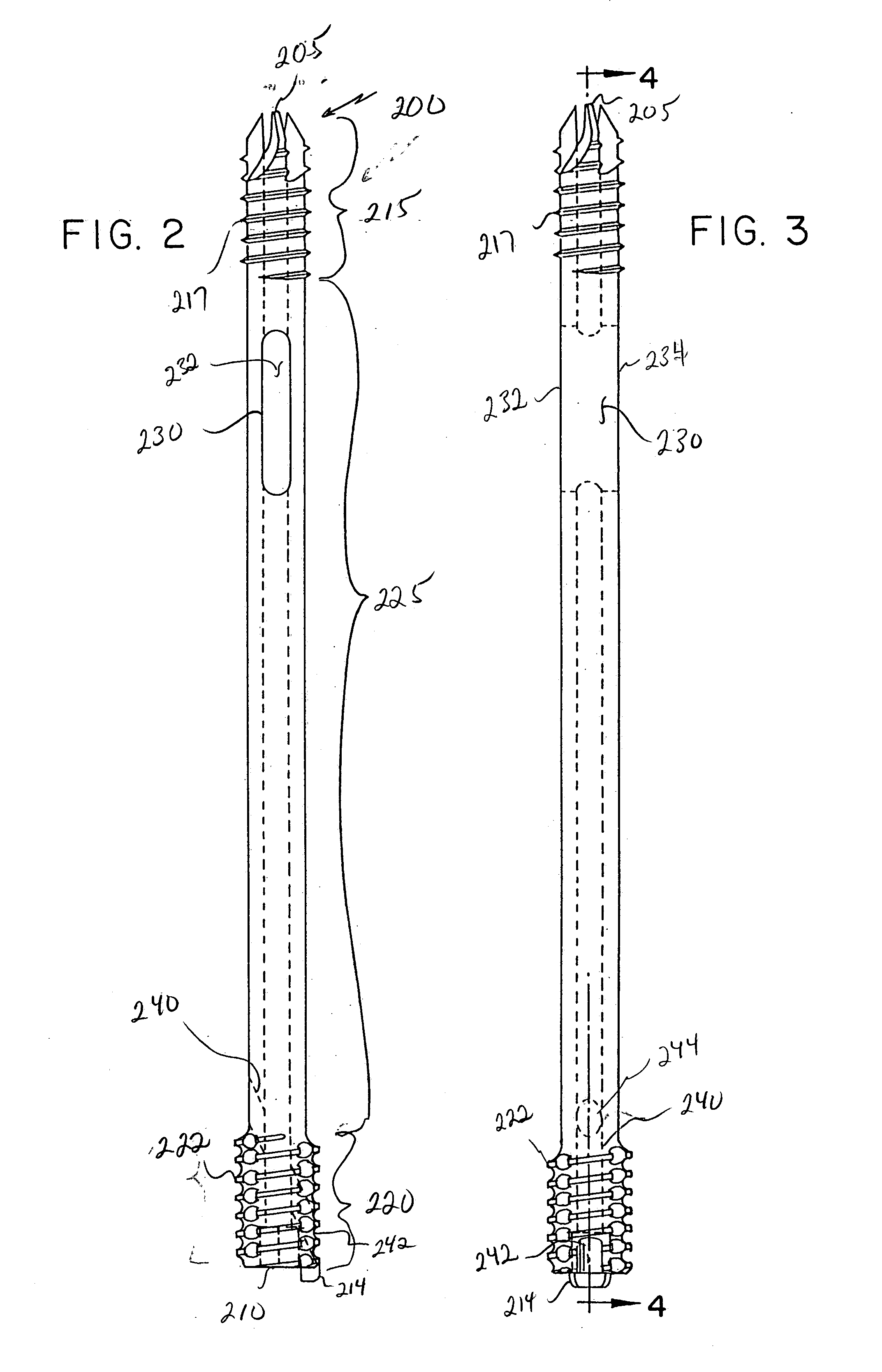Intramedullary locked compression screw for stabiliziation and union of complex ankle and subtalar deformities
a compression screw and intramedullary locking technology, applied in the field of doublethreaded screws, can solve the problems of difficult, or even impossible, for the elderly patient, surgeons using traditional techniques for reconstruction of complex ankle and/or subtalar joints, and the high percentage of poor, so as to facilitate the patient's activities and shorten the operative tim
- Summary
- Abstract
- Description
- Claims
- Application Information
AI Technical Summary
Benefits of technology
Problems solved by technology
Method used
Image
Examples
Embodiment Construction
[0035] A critical step in the use of the invention is the creation of the intramedullary canal or cavity across the joints between the bones involved in the fusion. As shown in FIG. 1, the canal extends from the sole of the foot 110, through the calcaneus 112, and talus 114, and tibia 118. The canal must be reamed to a sufficient size to accept a guide wire 120 and to accommodate the lockable double-threaded intramedullary compression screw 130.
[0036] Referring now to FIGS. 2 and 3, a lockable double-threaded intramedullary compression screw 200, in accordance with the present invention, is depicted. As shown, the compression screw 200 has three distinct sections, which will also be sometimes referred to as portions. One is a narrower, e.g. smaller diameter, threaded section 215, which is located proximate to the leading end 205 of the compression screw 200 and has threads 217. The leading end 205 is the end that is first inserted into the cavity during surgery. Another is a wider,...
PUM
 Login to View More
Login to View More Abstract
Description
Claims
Application Information
 Login to View More
Login to View More - R&D
- Intellectual Property
- Life Sciences
- Materials
- Tech Scout
- Unparalleled Data Quality
- Higher Quality Content
- 60% Fewer Hallucinations
Browse by: Latest US Patents, China's latest patents, Technical Efficacy Thesaurus, Application Domain, Technology Topic, Popular Technical Reports.
© 2025 PatSnap. All rights reserved.Legal|Privacy policy|Modern Slavery Act Transparency Statement|Sitemap|About US| Contact US: help@patsnap.com



